This is named after the man who claimed to be the rightful heir to the throne of England and, in 1497, entered Taunton with an army of 8,000. Perkin Warbeck was cross-examined by King Henry VII, in Taunton Castle, and eventually executed.
A photograph and text about Peter Trego.
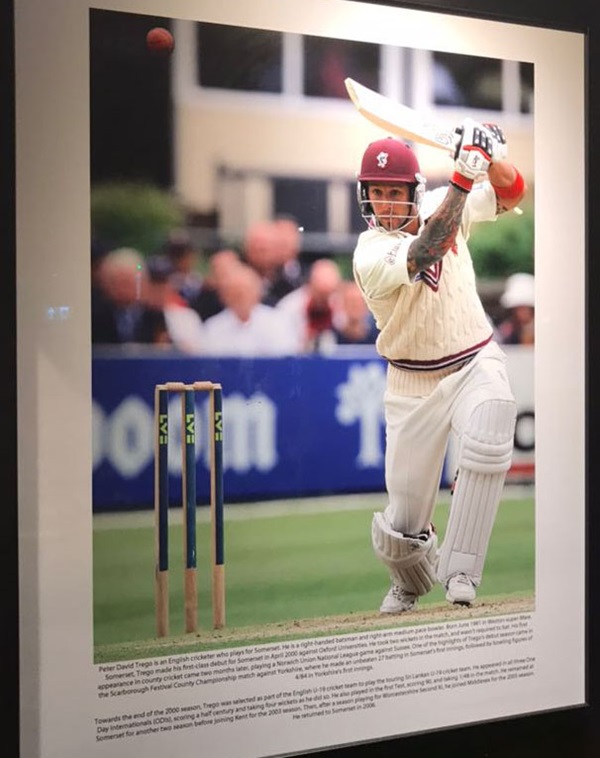
The text reads: Peter David Trego is an English cricketer who plays for Somerset. He is a right handed batsman and right arm medium pace bowler. Born June 1981 in Weston-super-Mare, Somerset, Trego made his first class debut for Somerset in April 2000 against Oxford University. He took two wickets in the match, and wasn’t required to bat. His first appearance in county cricket came two months later, playing a Norwich Union National League game against Sussex. One of the highlights of Trego’s debut season came in the Scarborough Festival County Championship match against Yorkshire, where he made an unbeaten 27 batting in Somerset’s first innings, followed by bowling figures of 4/84 in Yorkshire’s first innings.
Towards the end of the 2000 season, Trego was selected as part of the English U-19 cricket team to play the touring Sri Lankan U-19 cricket team. He appeared in all three One Day Internationals (ODIs), scoring a half century and taking four wickets as he did so. He also played in the first Test, scoring 90, and taking 1/48 in the match. He remained at Somerset for another season before joining Kent for the 2003 season. Then, after a season playing for Worcestershire Second XI, he joined Middlesex for the 2005 season. He returned to Somerset in 2006.
Photographs and text about the television show Beyond the Boundary.
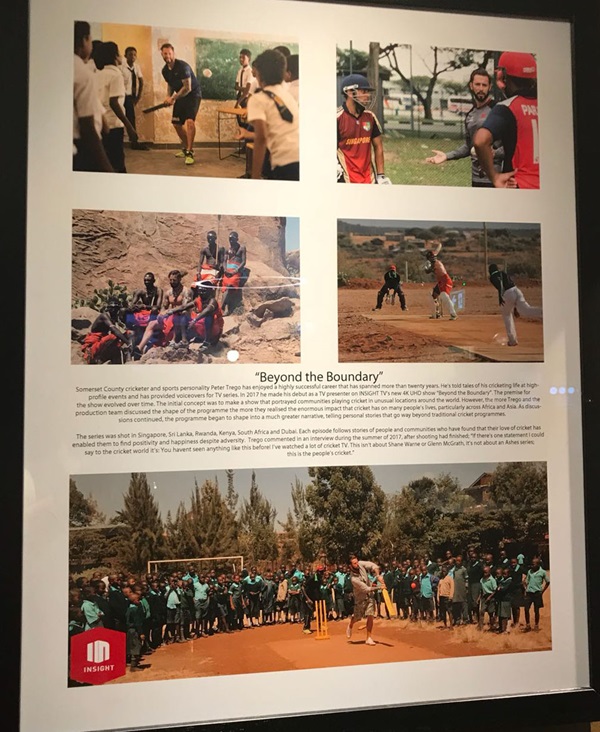
The text reads: Somerset County cricketer and sports personality Peter Trego has enjoyed a highly successful career that has spanned more than twenty years. He’s told tales of his cricketing life at high-profile events and has provided voiceovers for TV series. In 2017 he made his debut as a TV presenter on INSIGHT TV’s new 4K UHD show Beyond the Boundary. The premise for the show evolved over time. The initial concept was to make a show that portrayed communities playing cricket in unusual locations around the world. However, the more Trego and the production team discussed the shape of the programme the more they realised the enormous impact that cricket has on many people’s lives, particularly across Africa and Asia. As discussions continued, the programme began shape into a much greater narrative, telling personal stories that go way beyond traditional cricket programmes.
The series was shot in Singapore, Sri Lanka, Kenya, South Africa and Dubai. Each episode follows stories of people and communities who have found their love of cricket has enabled them to find positivity and happiness despite adversity. Trego commented in an interview during the summer of 2017, after shooting had finished “If there’s one statement I could say to the cricket world it’s: You haven’t seen anything like this before! I’ve watched a lot of cricket TV. This isn’t about Shane Warne or Glenn McGrath, it’s not about an Ashes series; this is the people’s cricket”.
Photographs and text about Marcus Trescothick.
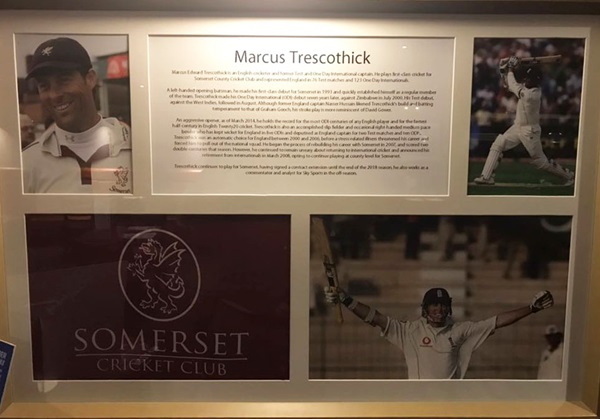
The text reads: Marcus Edward Trescothick is an English cricketer and former Test and One Day International captain. He plays first class cricket for Somerset County Cricket Club and represented England in 76 Test matches and 123 One Day Internationals.
A left handed opening batsman, he made his first class debut for Somerset in 1993 and quickly established himself as a regular member of the team. Trescothick made his One Day International (ODI) debut seven years later, against Zimbabwe in July 2000. His Test debut, against the West Indies, followed in August. Although former England captain Nasser Hussain likened Trescothick’s build and batting temperament to that of Graham Gooch, his stroke play is more reminiscent of David Gower.
An aggressive opener, as of March 2014, he holds the record for the most ODI centuries of any English player and for the fastest half-century in English Twenty20 cricket. Trescothick is also an accomplished slip fielder and occasional right handed medium pace bowler who has kept wicket for England in five ODIs and deputised as England captain for two Test matches and ten ODIs. Trescothick was an automatic choice for England between 2000 and 2006, before a stress related illness threatened his career and forced him to pull out of the national squad. He began the process of rebuilding his career with Somerset in 2007, and scored two double-centuries that season. However, he continued to remain uneasy about returning to international cricket and announced his retirement from internationals in March 2008, opting to continue playing at county level for Somerset.
Trescothick continues to play for Somerset, having signed a contract extension until the end of the 2018 season, he also works as a commentator and analyst for Sky Sports in the off-season.
A Somerset Country Cricket Club shirt, from 2017, signed by Marcus Trescothick.
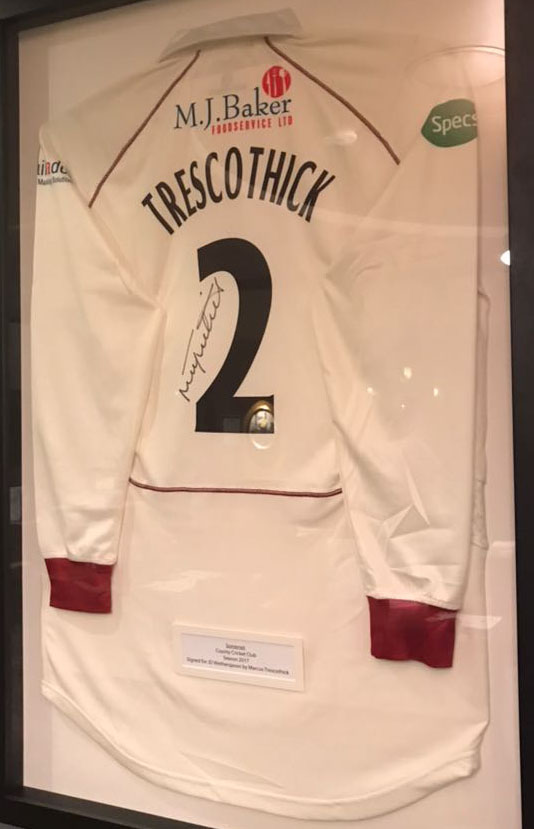
A signed cricket bat by the Somerset team in 2006.

A print, illustrations and text about lighting in the area.
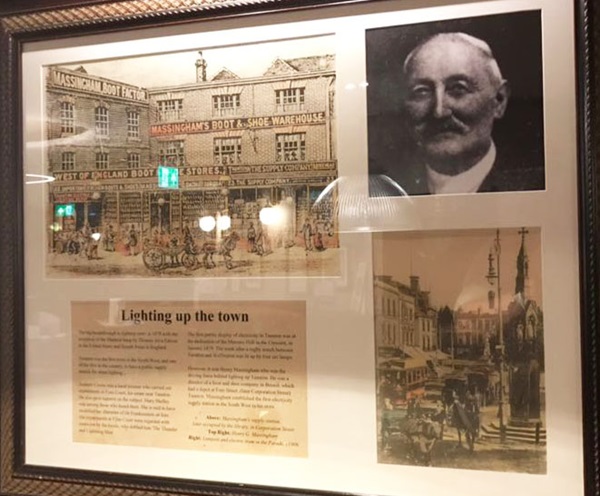
The text reads: The big breakthrough in lighting came in 1879 with the invention of the filament lamp by Thomas Alva Edison in the United States and Joseph Swan in England.
Taunton was the first town in the south west, and one of the first in the country, to have a public supply mainly for street lighting.
Andrew Crosse was a local pioneer who carried out experiments at Fyne Court, his estate near Taunton. He also gave lectures on the subject. Mary Shelley was among those who heard him. She is said to have modelled her character of Dr Frankenstein on him. His experiments at Fyne Court were regarded with suspicion by the locals, who dubbed him ‘The Thunder and Lightning Man’.
The first public display of electricity in Taunton was at the dedication of the Masonic Hall in the Crescent, in January 1879. The week after a rugby match between Taunton and Wellington was lit up by four arc lamps.
However, it was Henry Massingham who was the driving force behind lighting up Taunton, He was a director of a boot and shoe company in Bristol, which had a depot at Fore Street, (later Corporation Street) Taunton. Massingham established the first electricity supply station in the south west in his store.
Above: Massingham’s supply station, later occupied by the library, in Corporation Street
Top Right: Henry G Massingham
Right: Lamppost and electric tram in the Parade, c1906.
An illustration and text about Samuel Taylor Coleridge and William Wordsworth.
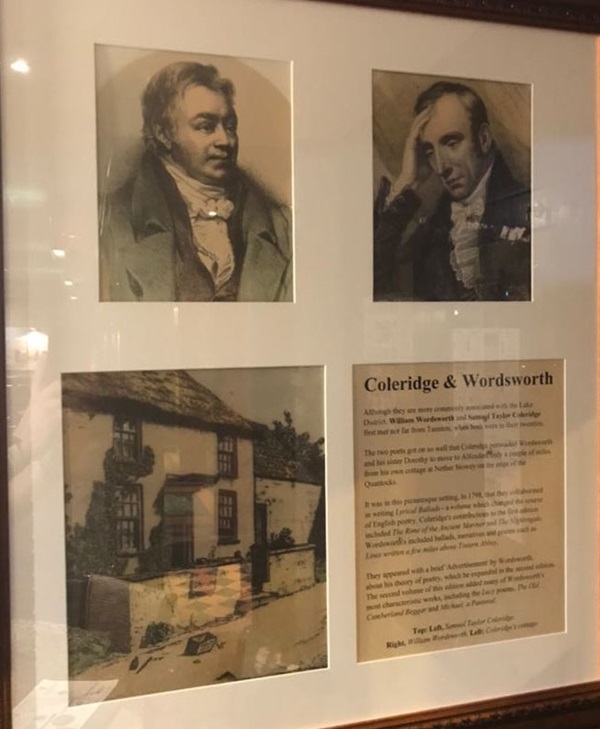
The text reads: Although they are more commonly associated with the Lake District, William Wordsworth and Samuel Taylor Coleridge first met not far from Taunton, when both were in their twenties.
The two poets got on so well that Coleridge persuaded Wordsworth and his sister Dorothy to move to Alfoxden, only a couple of miles from his own cottage at Nether Stowey on the edge of the Quantocks.
It was in this picturesque setting, in 1798, that they collaborated in writing Lyrical Ballads – a volume which changed the course of English poetry. Coleridge’s contributions to the first edition included The Rime of the Ancient Mariner and The Nightingale. Wordsworth’s included ballads, narratives and poems such as Lines written a few miles above Tintern Abbey.
They appeared with a brief ‘Advertisement’ by Wordsworth, about his theory of poetry, which he expanded in the second edition. The second volume of this edition added many of Wordsworth’s most characteristic works, including the Lucy poems, The Old Cumberland Beggar and Michael, a Pastoral.
Top: left, Samuel Taylor Coleridge, right, William Wordsworth
Left: Coleridge’s cottage.
Illustrations, prints and text about The Castle Hotel.
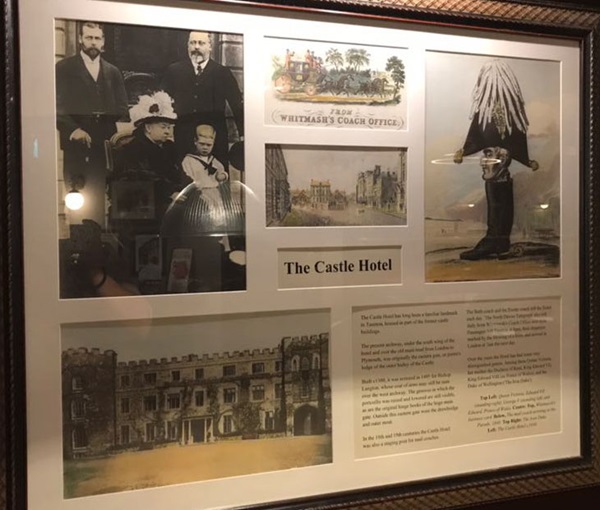
The text reads: The Castle Hotel has long been a familiar landmark in Taunton, housed in part of the former castle buildings.
The present archway, under the south wing of the hotel and over the old main road from London to Plymouth, was originally the eastern gate, or porter’s lodge of the outer bailey of the castle.
Built c1300, it was restored in 1495 for Bishop Langton, whose coat of arms may still be seen over the west archway. The grooves in which the portcullis was raised and lowered are still visible, as are the original hinge hooks of the huge main gate. Outside this eastern gate were the drawbridge and outer moat.
In the 18th and 19th centuries The Castle Hotel was also a staging post for mail coaches.
The Bath coach and the Exeter coach left the hotel each day. The North Devon Telegraph also left daily from Whitmarsh’s Coach Office next door. Passengers left Taunton at 8pm, their departure marked by the blowing of a horn, and arrived in London at 7am the next day.
Over the years the hotel has had some very distinguished guests. Among them Queen Victoria, her mother the Duchess of Kent, King Edward VII, King Edward VIII (as Prince of Wales), and the Duke of Wellington (The Iron Duke).
Top left: Queen Victoria, Edward VII (standing right), George V (standing left) and Edward, Prince of Wales.
Centre: top, Whitmarsh’s business card, below, the mail coach arriving at the Parade, 1840
Top right: The Iron Duke
Left: The Castle Hotel, c1930.
A photograph of Station Road, Taunton, c1908.
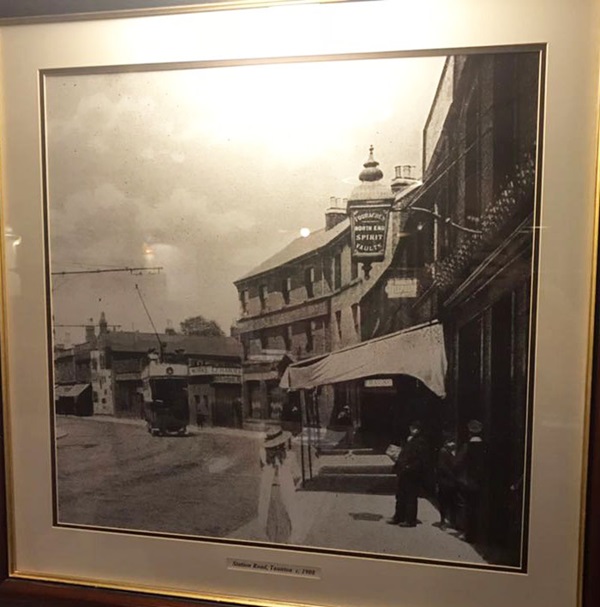
A photograph of Taunton, c1910.
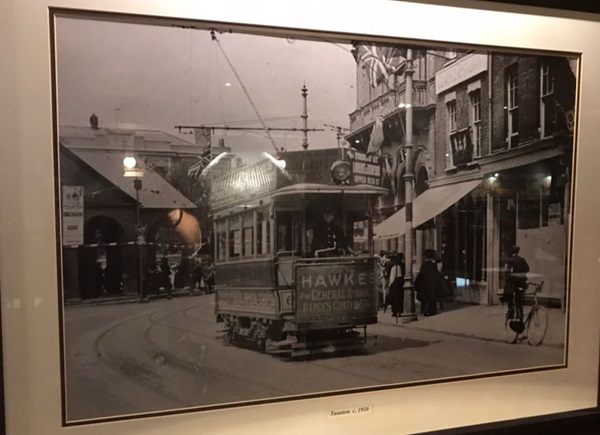
A photograph of the Parade, Taunton, c1905.
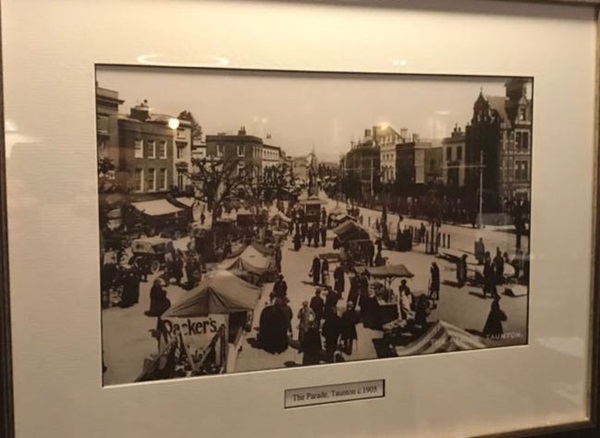
A photograph of East Reach, Taunton, 1900s.
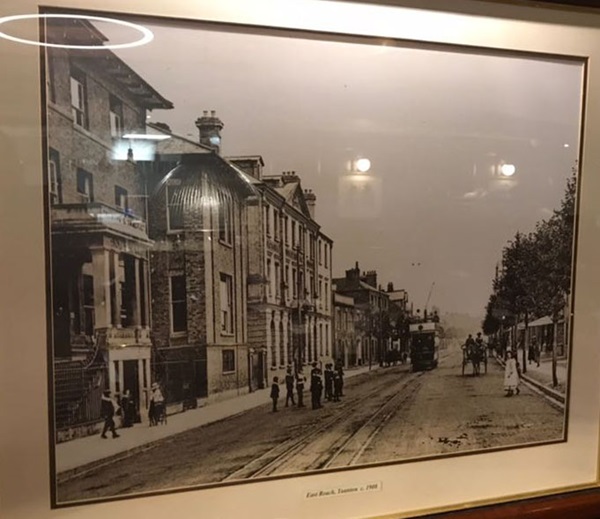
A photograph of Vivary Park, Taunton, 1900s.
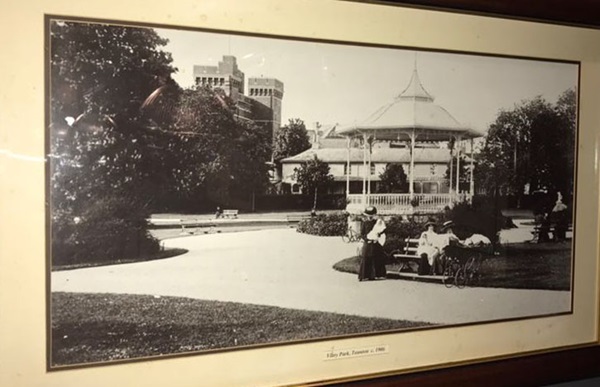
External photograph of the building – main entrance.
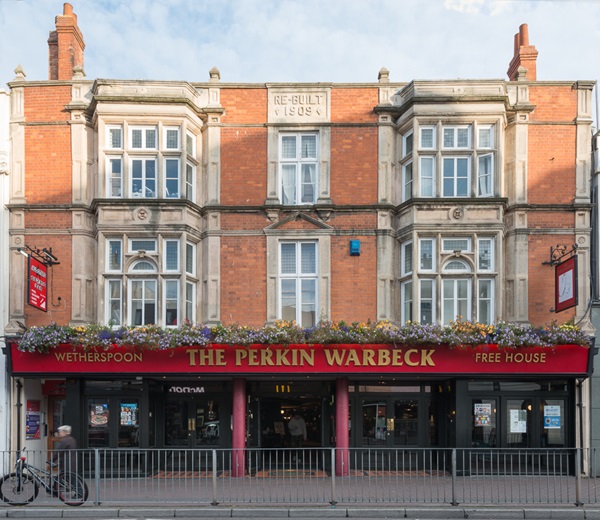
If you have information on the history of this pub, then we’d like you to share it with us. Please e-mail all information to: pubhistories@jdwetherspoon.co.uk